
The National Marine Manufacturers Association has found that approximately 100 million individuals go boating each year. That means there are millions of boats on the water across the globe. As a result, propellers have made a major splash within this industry, with the types of propellers continually expanding as boat technology improves.
If you’re interested in purchasing new boat propellers, then keep reading to learn more about the distinct types!
Types of Boat Propellers
Multiple boat propeller types exist with different classifications. These include:
Blade Shape Types
Propellers often appear different because of their blade shape types, but only three shapes exist, including:
1. Cleaver
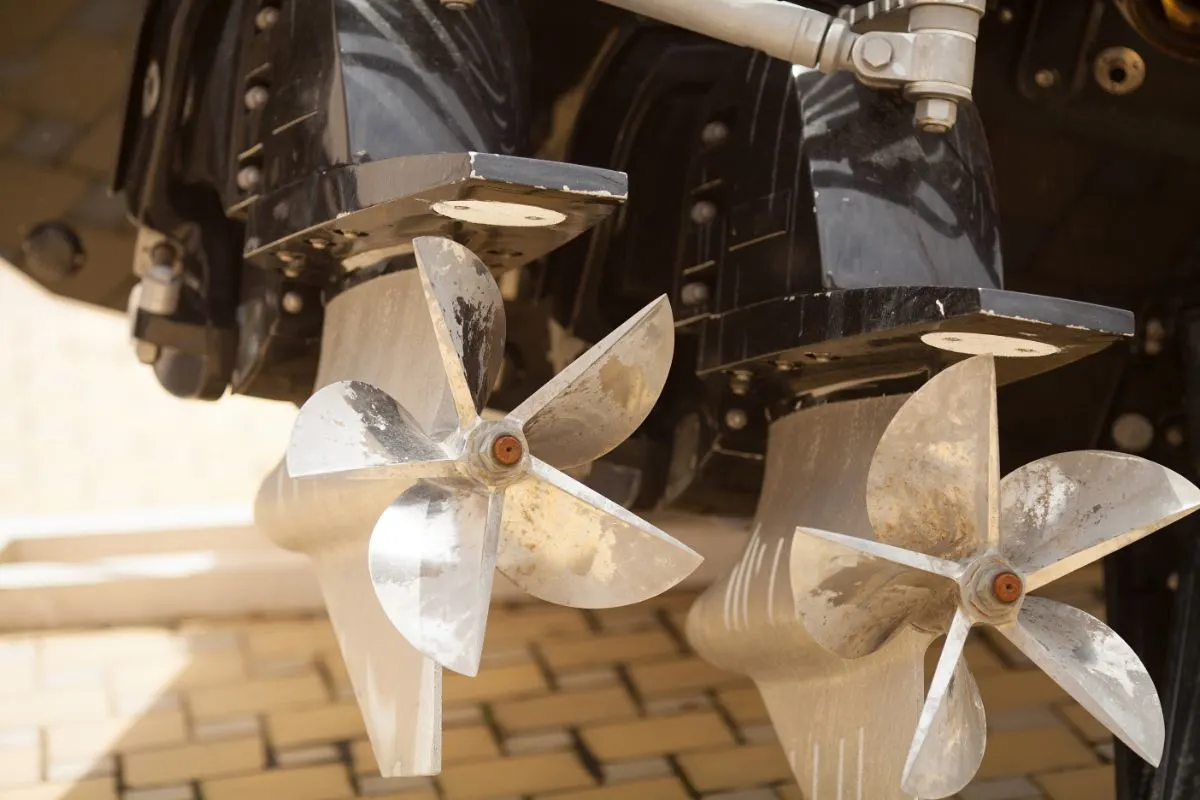
A cleaver blade has a trailing edge cut in a straight line. The cross-section of this blade shape resembles a wedge, so the leading edge is sharp and thin, but the trailing edge is the thickest point on the component. This style is best used on elevated engine installations that allow the propeller blades to cut into the water surface.
2. Conventional
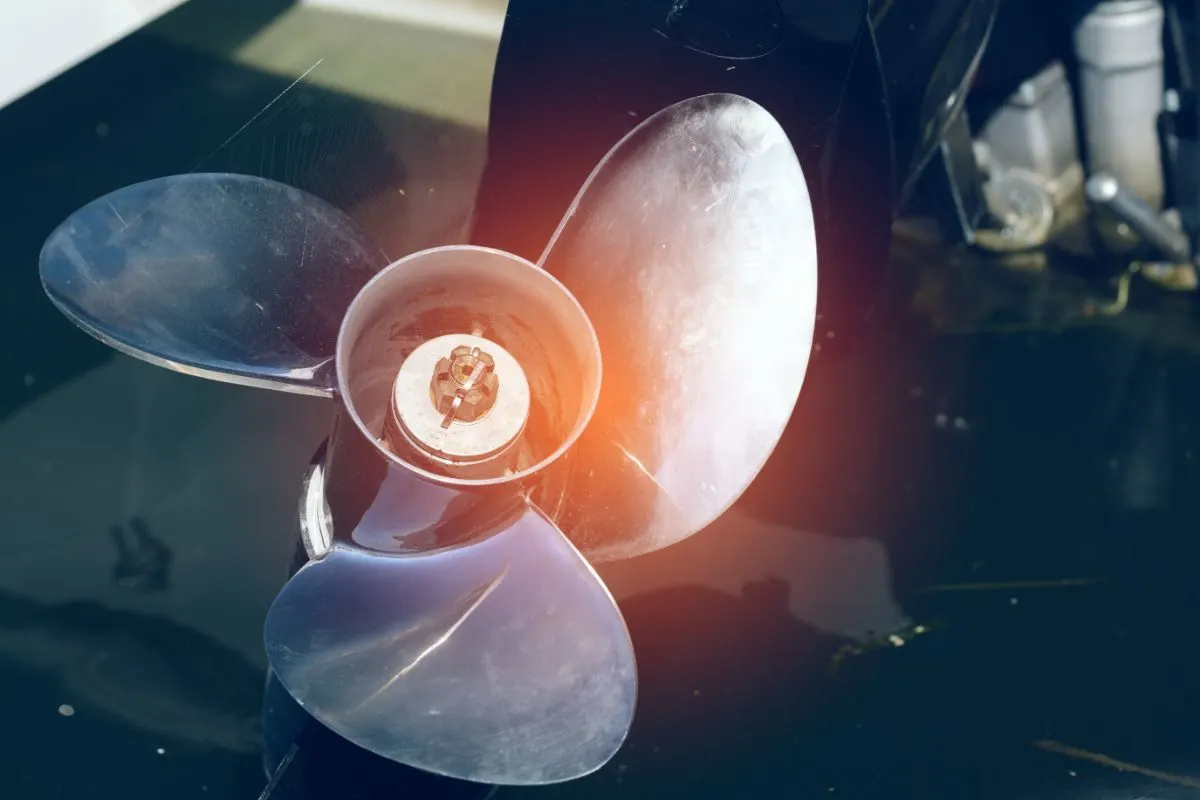
The conventional clade shape is what you find on most propellers. The blades have a rounded contour with a small amount of skew and can appear in various shapes depending on the application. This propeller shape was engineered to be completely submerged in the water.
3. Weedless

Weedless propellers feature a rounded blade with a high skew, so the leading edge is moved back to a high degree. The most weedless propellers will look entangled within a ball of weeds, which are the leading gear housing torpedo and strut edges. The rotating blades create a tight weed doughnut that wraps around the front edge of the outer hub.
This design type easily sheds water during reverse propeller rotation. It’s important to note that considerable weed balls can prevent sufficient thrust.
Number of Blades
Four propeller types exist within the number of blade classification: three, four, five, and six-blade propellers. The most common are four and five-blade propellers because they are a balance of strength and efficiency, due to the number of blades.
4. Three-Blade Propeller
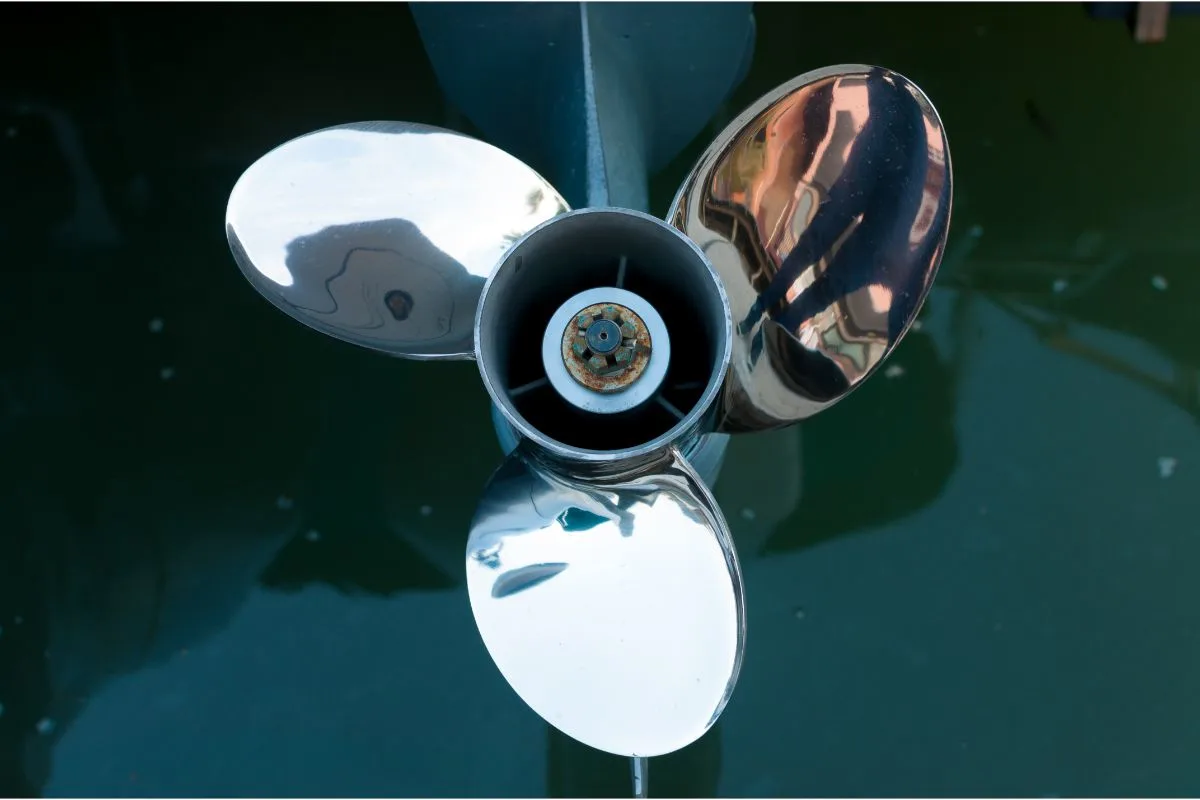
The three-blade propeller is the least expensive of the four options due to having only three blades. Most are constructed from aluminum alloy to ensure durability and longevity while being lightweight. Also, the acceleration is the best of all four options, but low-speed handling is poor.
If you are looking to add new propellers to a speed boat, then the three-blade construction is a great option since it delivers high-speed performance.
5. Four-Blade Propeller
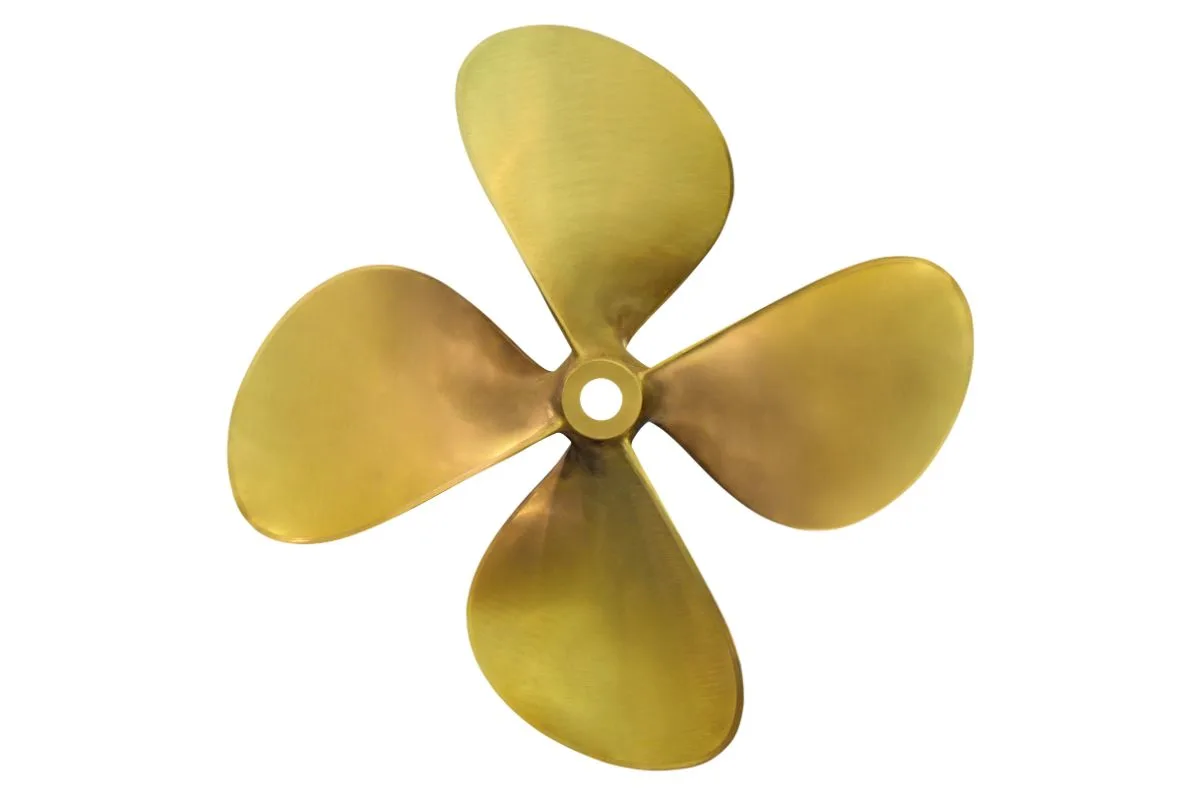
Although the cost is higher than the three-blade option, the four-blade propeller offers improved strength and durability because they are constructed from a stainless steel alloy. At lower speeds, the four-blade propellers are excellent while delivering a fantastic performance.
Other benefits include terrific holder power while in rough seas and the best fuel economy of the four propeller types.
6. Five-Blade Propeller
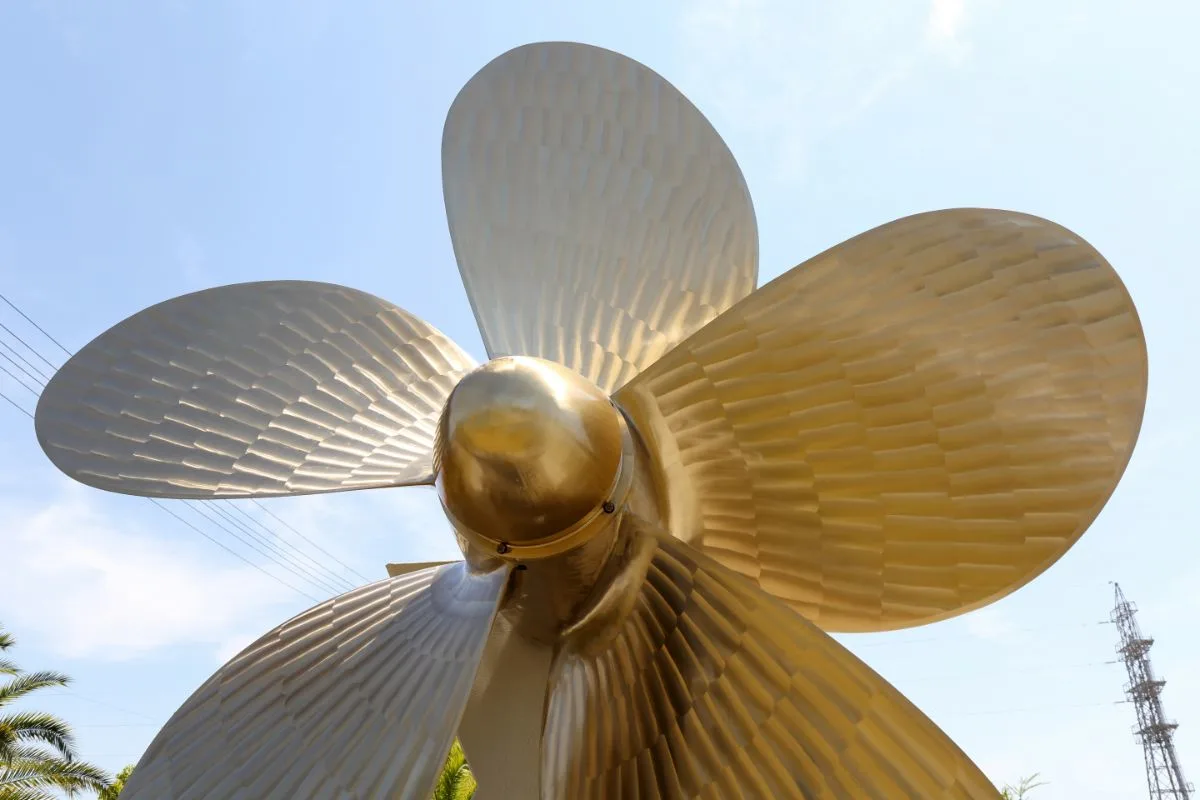
The five-blade propeller is the most expensive in the group but also offers the least amount of vibration during operation. It also has high holding power during turbulent rides and is an extremely durable construction.
7. Six-Blade Propeller
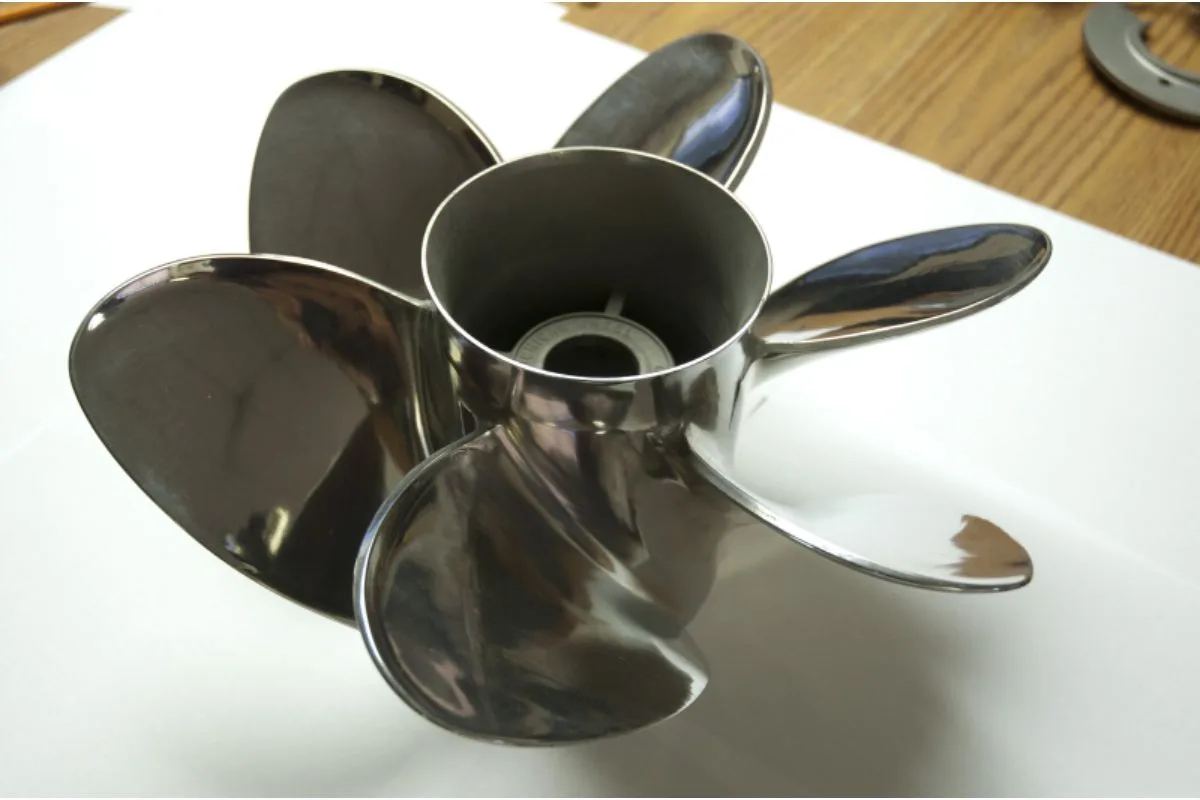
The least common type is the six-blade propeller, which has a prohibitive cost. However, with that high cost is a minimal amount of vibration during use, excellent holding power in rocky waters, and a reduction in the pressure field that forms over the propeller resulting in a smoother ride.
Blade Pitch
A blade pitch is a displacement performed by the propeller with every 360-degree revolution. This propeller classification features the following options:
8. Fixed Pitch
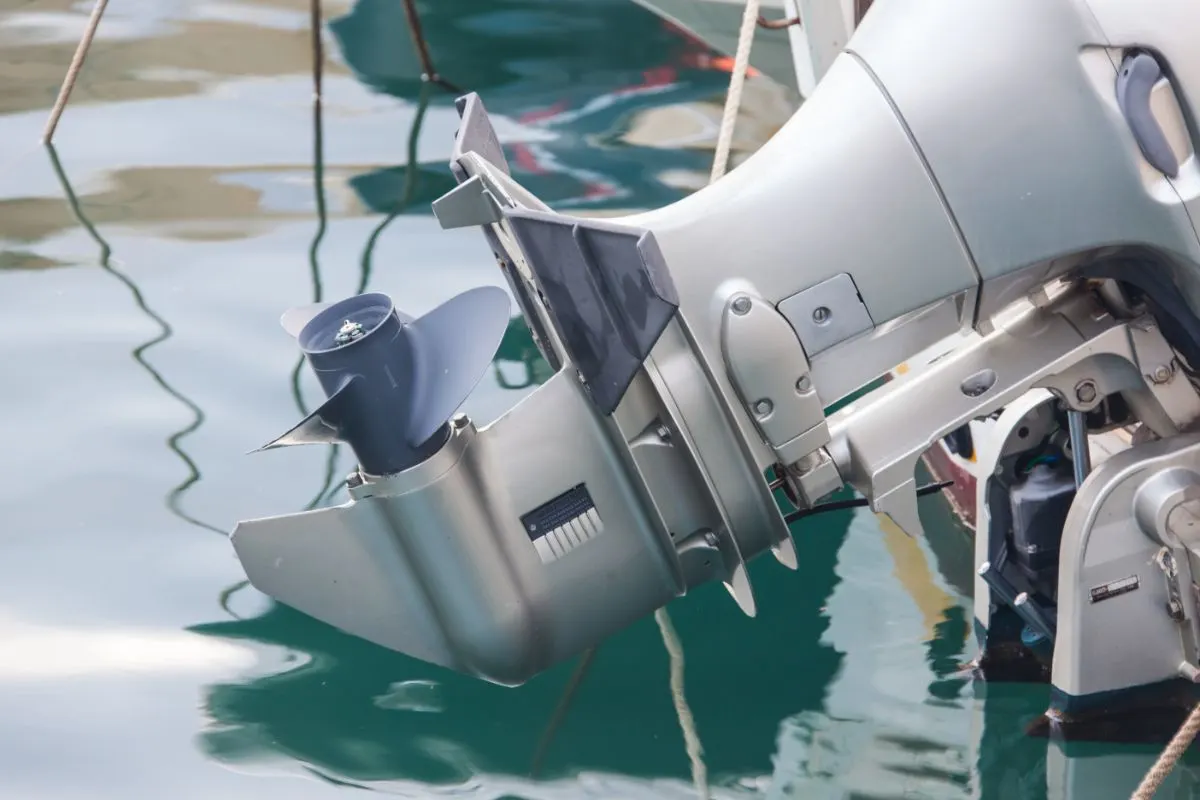
As the name suggests, a fixed-pitch propeller features blades that are permanently connected. That means the pitch position and blades are always fixed and can never be adjusted while in operation. This propeller type is usually made from copper alloy to ensure longevity and durability over countless uses.
Fixed pitched propellers are as robust and reliable as the entire system, and don’t use a mechanical connection or hydraulics to operate. The installation, operation, and manufacturing costs are significantly lower than the controlled pitch propeller. However, the maneuverability is less than the controlled pitch propeller because the blades are fixed.
9. Controllable Pitch Propeller
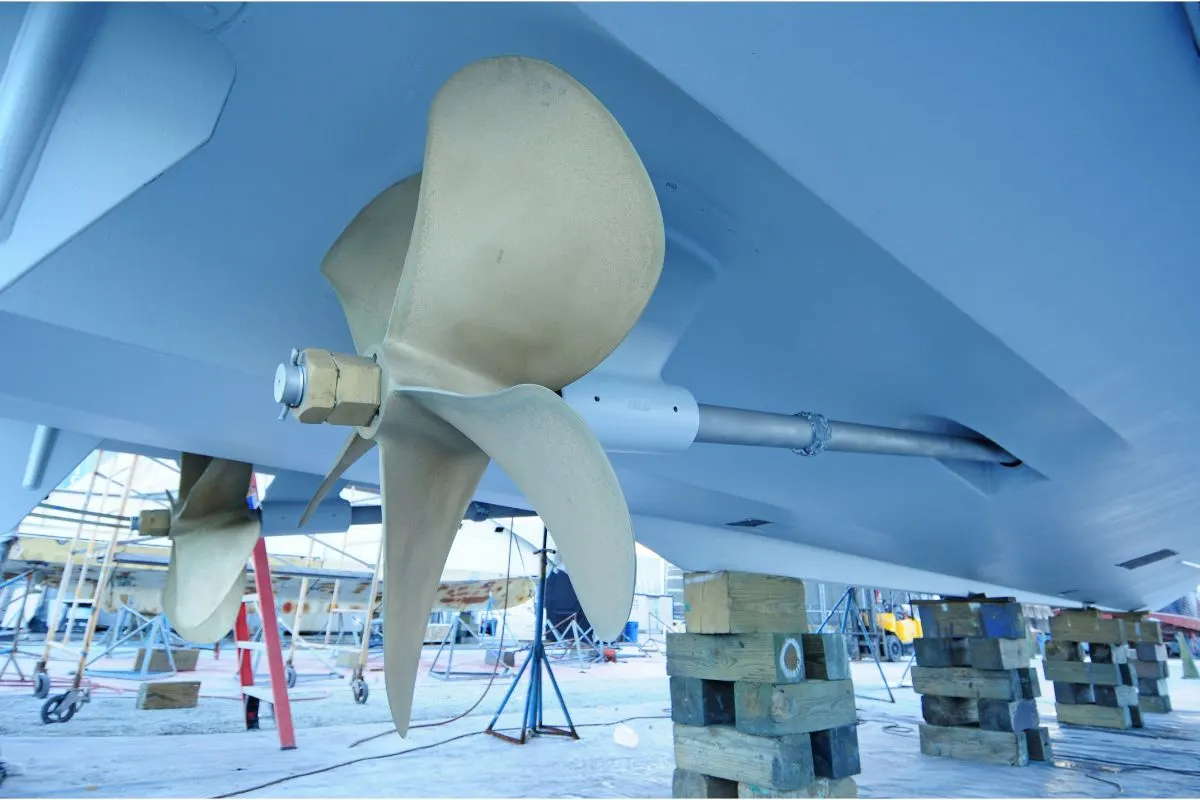
The controllable pitch propeller allows the owner to adjust the pitch by simply rotating the blade on its vertical axis through hydraulic and mechanical components.
The result is a consistent load without a reversing mechanism requirement since the pitch is changed to match the current operating condition. This improves maneuverability and overall engine efficiency, thus improving gas usage.
The downside to installing a controllable pitch propeller is the increase in oil pollution since hydraulic oil can leak while regulating the pitch. Also, the system is extremely complicated and is, therefore, costly from an operational and installation standpoint. Therefore, if a mechanical problem arises, it can be an incredibly costly fix.
Related: Parts of a Boat (Illustrated Diagram of a Boat’s Anatomy)
FAQs
How does a boat propeller work?
Since boats are displaced in water, the propeller is installed to move the ship forward or backward, depending on the pitch or rotation of the unit.
The engine is connected to the propeller through a shaft arrangement, which is divided into three components, the thrust, intermediate, and tail shafts. The thrust shaft is the main component coming out of the engine and receives rotational motion from the crankshaft.
The intermediate shaft connects the thrust and tail shafts. The last segment is the tail shaft, which connects to the propellers on one side, and a gearbox, which connects to the intermediate shaft, on the other.
As the engine rotates, the blades, which have a specific pitch form and spiral shape, transform rotational power into thrust in one direction. The propeller blades generate pressure between the front and back surfaces, thus accelerating water backward and the boat, as the reactive force, forwards.
To move the boat in reverse, the propellers must rotate counterclockwise, which reverses the thrust and pushes the water forward.
What are the most common propeller materials?
The propeller material selection is based on the type of boating experience. For instance, boats designed to move quickly will want a lightweight material like aluminum to provide performance. Aluminum propellers are also mostly found on small or mid-sized boats because they are cost-effective, easy to fix, and lightweight.
Another popular material is bronze because it is a protective barrier to corrosion. You will mostly find bronze propellers on inboard engines because they resist fatigue and flexing.
Stainless steel is another popular option since it can withstand harsh environments and high speeds. This propeller material type is best suited for heavy boats because of its high level of durability. Metal alloys are also becoming a more popular option since they are a combination of the best features of several metals.
For instance, Nibral is a popular alloy comprised of bronze, aluminum, and nickel. This combination is durable, strong, and corrosion-resistant, so it’s mostly found in large boards with sterndrives or inboard engines.
What should I look for in a propeller?
The boating experience you want to enjoy greatly dictates the propeller type. This is because some boat propellers were designed for high speed across open waters, while others were engineered for heavy boats traveling across rough waters. Other propellers were created for tow wakeboarders, tubers, or water skiers.
Determining your desired boating experience will greatly improve the entire selection process and should be the first consideration on your list. In addition to the specific material type listed above, the number of blades is a key factor when purchasing a new propeller. The number of blades you purchase will have a major impact on the smoothness and efficiency of your entire boat.
Also, consider the boat size you currently have, then you can determine the best blade count. Another critical aspect of propeller purchasing is the required dimensions. The propeller’s diameter and pitch are the two most important dimensions. A smaller pitch equates to higher speed and acceleration.
The diameter is considered the distance from one blade tip to the other. A larger diameter propeller creates more power, while a smaller diameter generates more speed.
What are the basic propeller components?
The standard propeller is constructed using 13 parts. The blade tip is the end of the propeller, while the leading edge is the blade nearest the boat, and the trailing edge is the blade furthest from the boat. The small lip on the trailing edge of the blade is called the cup, and it allows the propeller to hold water slightly better during thrust.
The blade face is the part of the blade that faces away from the boat, which creates positive pressure. The blade’s back is the opposite side of the blade, which creates negative pressure, or suction.
The blade root is the part that attaches to the inner hub, which is the forward end of the entire hub. This component is constructed from metal and transmits the thrust to the propeller shaft and eventually to the entire boat. The outer hub is the exterior surface that connects to the water.
The blades are attached to this surface while the inner area connects to the exhaust passage. The ribs are the connections between the outer and inner hubs. Typically, there are three ribs, but some designs have more or less. The ribs are commonly parallel to the propeller shaft or the blades, depending on the design.
The rubber hub is molded into an inner hub that protects the drive system from damage during operation and allows it to flex when shifting the engine, which is subjected to shift shock between the clutch and the gear mechanism. The diffuser ring helps with reducing back pressure and prevents exhaust gas from navigating back to the blades. Finally, the exhaust passage is a hollow section between the outer and inner hubs where the engine exhausts gas into the water.
